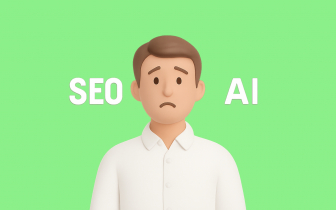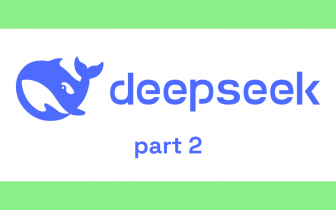ChatGPT: What It Is and How Writers Can Use It

Whether you like it or not the buzz around ChatGPT is real. Tech forums, content creators, innovation enthusiasts - everyone is talking about this AI tool.
We discuss how to use it better, what benefits it brings, what bugs it still has, and what possible threats it can bring. Something that existed only in sci-fi movies is now becoming a reality.
ChatGPT has already surprised its users with the vast amount of actions it can perform. But does this mean we should worry about machines taking human jobs by storm? Well, though this smart tool is still to develop, it impacts the way many professionals work right now.
In this article, we will talk about ChatGPT, its possibilities, and how it can help you with content creation. Keep on reading to understand if you need to try this hype tool out.
When ChatGPT was released and what it is
Firstly, we need to make it clear that ChatGPT is not a separate standing company. It is a trained model, developed by OpenAI.
OpenAI is an American artificial intelligence laboratory that has non-profit and for-profit subsidiaries. OpenAI has built ChatGPT on top of its large language model called GPT-3. ChatGPT chatbot was set up via supervised and reinforcement learning techniques.
Does it sound too complicated?
Well, OpenAI itself puts the notion pretty straightforward. ChatGPT is a model that interacts with users in a conversational way. That said, ChatGPT can reply to different questions and give follow-ups to them, find mistakes, controvert incorrect suppositions, and turn aside inappropriate requests.
So, basically, it’s one of the most intelligent chatbots you have ever used. Yet, what’s interesting, ChatGPT creators didn’t expect such a mind-blowing success.
OpenAI released ChatGPT on the 30th of November, 2022. And since then this AI tool became viral. In fact, ChatGPT is one of the fastest-growing Internet applications with 13 million unique visitors as of January.
How ChatGPT works
ChatGPT is a smart tool so it can be trained. Taking into account the young age of this chatbot, there are lots of improvements and updates in front of it. (Well, there already were a few updates to the chatbot.)
OpenAI employs Reinforcement Learning from Human Feedback (RLHF) to train ChatGPT. The AI lab trained an original model via supervised adjusting: human artificial intelligence trainers held conversations where they acted as both sides - the user and an AI assistant.
OpenAI let trainers in to suggestions composed by ChatGPT to assist them to write their responses. Then OpenAI compounded this new dialogue dataset with the InstructGPT dataset and transformed it into a dialogue format.
The creators need to have comparison data to make a reinforcement model. So, they employed the conversation made between AI trainers and the chatbot. Then the developers picked responses written by the model, made a couple of alternative options, and asked AI trainers to evaluate them. After employing these reward models, OpenAI specialists were able to set up the model by using Proximal Policy Optimization. Then specialists repeated the procedure several times.
Sure thing, professionals continue to train the model. Sandhini Agarwal, AI Policy at OpenAI, says that “... we know the model is still very biased. And yes, ChatGPT is very good at refusing bad requests, but it’s also quite easy to write prompts that make it not refuse what we wanted it to refuse.”
She adds that the team teaches the model how to fight jailbreaks. Though the developers expected these things to happen - there’s still a place to grow. As such, they use some jailbreaks to test and train the model.
John Schulman, OpenAI co-founder, and Jan Leike, OpenAI Alignment Team lead, agree there are a lot of things to do. The model could have already been more sophisticated, yet the creators did not expect such an overwhelming interest in ChatGPT. Also, though large language models are not total newbies, they are at the early stages of development. That means ChatGPT has certain limitations.
Current ChatGPC limitations are:
- Sometimes the model returns incorrect or nonsense answers though they might sound credible.
- The model is sensitive to phrasing. For instance, you can receive no answer to some requests. Yet, once you rephrase it ChatGPT might answer it.
- The model can return unnecessarily wordy answers and use some phrases too much.
- ChatGPT makes guesses when answering complicated or unclear questions. Instead, it should ask adjusting questions. (The developers work toward it.)
- The model sometimes processes inappropriate questions. The chatbot creators try to ensure ChatGPT refuses the requests like this; still, the fails still happen.
Of course, OpenAI improves the model and continues to train and test it. Users could even win $500 in API credits for sharing their feedback when finding problematic outputs (the contest ended at the end of last year).
What ChatGPT can do
ChatGPT is a multi-purpose chatbot. We saw many cases when programmers share examples of how ChatGPT fixes bugs in code and even suggests improvements. You can even find examples of code-related interactions on the OpenAI page.
Yet, we are interested in text-based formats. So, let’s try to find out how ChatGPT operates in this direction.
Firstly, OpenAI provides a case of how the model generates a simple letter based on the user’s request. From this short example, we learn the chatbot differentiates different types of writing (informal and formal).
But is ChatGPT capable of writing something more complicated?
ChatGPT writes Youtube script
We started by asking ChatGPT to write a Youtube script about the top five SEO tools. The model returned a comprehensive answer with a video introduction and key information about the services and features they have.
ChatGPT creates social media posts
But what about social media posts? Well, we wanted to check if ChatGPT can create a worthy post for LinkedIn. And it did, to be honest. Moreover, the model even added hashtags to it.
ChatGPT writes text for infographic
Let’s imagine you need to create an infographic about link building in 2023. We asked ChatGPT to gather ten statistics about building links. It did that perfectly. Yet, we need to mention that the model does not provide any sources - it just mentions that “data was taken from various sources.” So, you still need to copy-paste the numbers to find the original sites to mention them in your infographic.
Can ChatGPT write a catchy ad?
We also asked the model to compose an ad for a link building service. We expected to create a short catchy ad line. Instead, ChatGPT wrote a longer format that is possible to use on the landing page. What’s notable, the chatbot mentioned some sort of company’s USPs (and even added the service can offer customized solutions).
Yet, the chat didn’t move further than the fourth point and just stuck on it. When we tried to specify the request telling that we need a 100-word ad we received the “Something went wrong” message.
ChatGPT composes text for a landing page
Thus if you need text for a landing page - this AI writing tool will compose it for you. You will get a canvas with the main sections you’d like to see for the site’s main page including a brief introduction, available services, the company’s mission or goal, and CTA to contact a team. Nevertheless, you still need to write a catchy opening phrase for your page’s first window.
ChatGPT suggests options for headlines
Also, ChatGPT can help with creativity block. If you are struggling to write a headline for your article or email, you can get a little help from it. As we instructed the model to offer suggestions for the first topic, we noticed some odd topics do not fit our expectations (topics one and three). Still, anyway, all themes are viable.
ChatGPT helps to re-write content
And now, let’s imagine you want to re-write your original article to post it on another source. ChatGPT can help you rephrase your text and make it unique. We tested this feature in the introduction of our article about B2C and B2B content marketing. The model did it well.
ChatGPT writes an article
And last but not least - can ChatGPT write a qualitative article and how much time does it take? We asked ChatGPT to create a 600 to 700 words article about immersive commerce. We asked it to add data (because we love statistics) and add practical examples.
It took ChatGPT literally two minutes to craft a text. The model understood our command to add data too straightforwardly, so it created a special section for it. Nevertheless, other sections were filled with numbers. The practical examples of iCommerce were really solid (our team got something new to learn). Moreover, ChatGPT added the benefits of immersive commerce to the article.
Yet, you still need to check the data to link it to the sources. Also, there was no conclusion to the article.
Extras
You can even write poems. Trust it or not, they are kinda cool.
Conclusion
ChatGPT is only a couple of months old. It’s just a baby. Yet, the things it can do can amaze even professionals regardless of their industry.
Sure thing, this smart model has lots of space to grow. As OpenAI key people say - there are limitations and odds the team has to fix.
ChatGPT can optimize writers’ work without a doubt. Yet, we won’t recommend using this AI writing tool blindly. Regardless of what you compose with the help of the bot, make sure to re-check it. Let’s remember it’s a machine (even though it is trained it’s still a machine).
Tell us your attitude to AI tools like ChatGPT. Have you tried it yet? How well has everything worked for you? Leave your comments down below.






